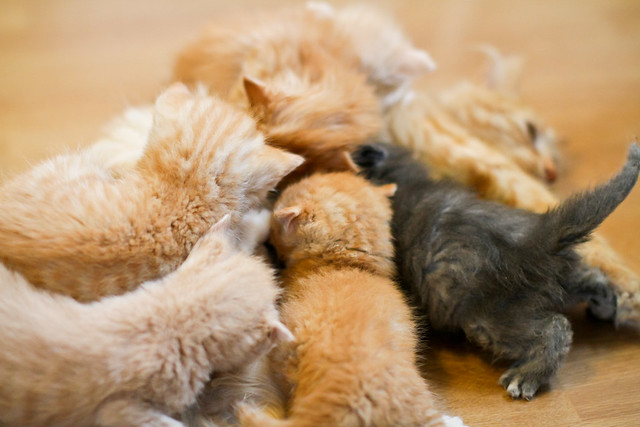I don't have any idea what you've studied, but I explained it so that other people would know, because not everyone does. (talking about the Barr body effect isn't super explanatory to most people)
ie, when my friend fostered this cat:
Everyone was speculating on what color the kittens would be. These are intelligent people, they just haven't had cause to learn about cat color genetics. Mind you, she did do a good job of producing as much variety as possible.
If you don't know the genetics, talking about potential linkage between behavioral and color genes isn't going to make a lot of sense.
Siamese cats are known for having a bit of an edge to them, which is a breed trait, and I'd imagine high content Siamese mixes could have that trait too, which could be why you associate feistiness with that coloration. Ragdolls have the same pattern, and are particularly noted for being the opposite of feisty, so there is no link between the coloration and temperament, it's just something that is in a certain breed.
The feisty torties, OTOH, are typically of the "DSH"/"DLH" type. Cats of no particular breed. So if there are similarities of temperament, there has to be another explanation. There are individual cats who don't appear to have got the feistiness (the orange female in that photo was not feisty. she had some serious issues, and could have been a bit brain damaged, but wasn't feisty), which is reasonable, because other factors can obviously outweigh any given factor.
In several years of dealing with cats at a busy veterinary practice which did boarding, though, so a whole lot of cats (being placed under stressors which would magnify any feistiness of temperament), I did note that the tortie attitude which my coworkers told me about was generally true. I can't explain it, but I definitely observed it.




